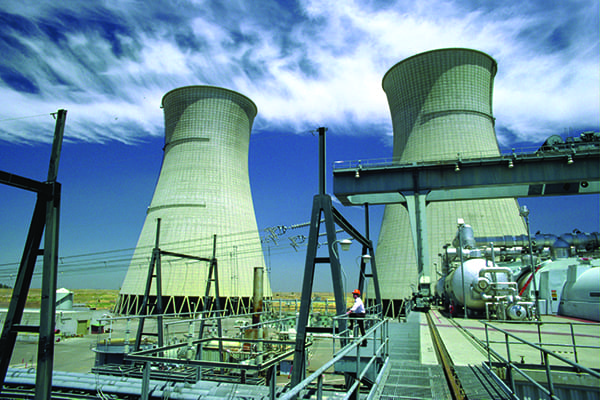Iran Expands Plans for Nuclear Power
Nuclear power in Iran has struggled to gain a foothold, with the country dogged by political power struggles, international sanctions, and significant scrutiny of its nuclear program for decades. The country has one operating nuclear reactor, Bushehr 1, a 1,000-MW Russian-built and designed VVER-1000 (water-water energetic reactor) unit that began commercial operation in September 2013-nearly 40 years after construction began at the site. The country in mid-March announced construction is moving forward on two additional units at Bushehr (Figure 1), again as part of an agreement with Russia's Rosatom.
 |
1. The Bushehr Phase-2 project in Iran is moving forward as the country looks to expand its nuclear power generation capacity. Two new units, with total capacity of 2,100 MW, will be added to an existing 1,000-MW reactor. Courtesy: Rosatom |
Ali Akbar Salehi, head of the country's Atomic Energy Organization (AEOI), on March 18 said, "Everything is moving ahead in an excellent manner," according to the IRNA news agency. The Bushehr Phase-2 project will include two reactors with total generation capacity of 2,100 MW. Salehi, speaking at a Cabinet meeting in Tehran, said, "I was in Bushehr two or three days ago and the Bushehr 2 and Bushehr 3 power plants are being constructed." Salehi reportedly said infrastructure for the two units is in place, noting that thousands of tons of concrete and cement have been used. The Bushehr expansion was first proposed to Iranian officials by Russian nuclear experts in September 2014, and construction began in late 2017.
AEOI has said construction of the two new reactors would take 10 years, at a cost of $10 billion. Rosatom has said the reactors are AES-92 Generation III+, or V-466B, based on the VVER-1000 V-392 reactor. The World Nuclear Association (WNA) has said commercial operation of the two new reactors is expected in 2024 and 2025.
Radio Farda, a U.S.-supported news network in Iran, has reported that senior officials in Iran's nuclear organization have complained of a "minimal" budget for construction of the Bushehr expansion. The network reported that Salehi and his deputy have both criticized the Iranian government, saying the budget for the plant's development is too low and endangers the project's future. The network reported that Salehi, speaking at an industrial seminar, said, "The electricity produced at the Bushehr reactor is bought for $40 million, while the annual budget needed for running the plant is $120 million" there is a deficit of $80 million for which we don't know how to compensate."
Iran's economy has struggled due to international sanctions, including U.S. sanctions that reportedly have cut the country's oil exports by half. The WNA reports that two more new reactors are planned on the Makran coast, and another seven reactors have been proposed, including at least two more units at Bushehr.
Though there have been global concerns about Iran's nuclear plans, nuclear experts have argued the Bushehr plant is not a risk as International Atomic Energy Agency (IAEA) inspectors monitor the site to ensure that all of the spent fuel is returned to Russia. Iran, though, last year reopened a uranium enrichment plant that had been idle for nine years. The AEOI said the country wants to increase uranium enrichment capacity if a nuclear deal with world powers falls apart after the U.S. withdrawal from the 2015 Iran deal, in which Iran restricted its enrichment program and in return won relief from sanctions. Iran in June 2018 notified the IAEA that the AEOI was opening a center at Natanz to produce new centrifuges for uranium enrichment in the wake of the U.S. withdrawal.
-Darrell Proctoris a POWER associate editor.
The post Iran Expands Plans for Nuclear Power appeared first on POWER Magazine.